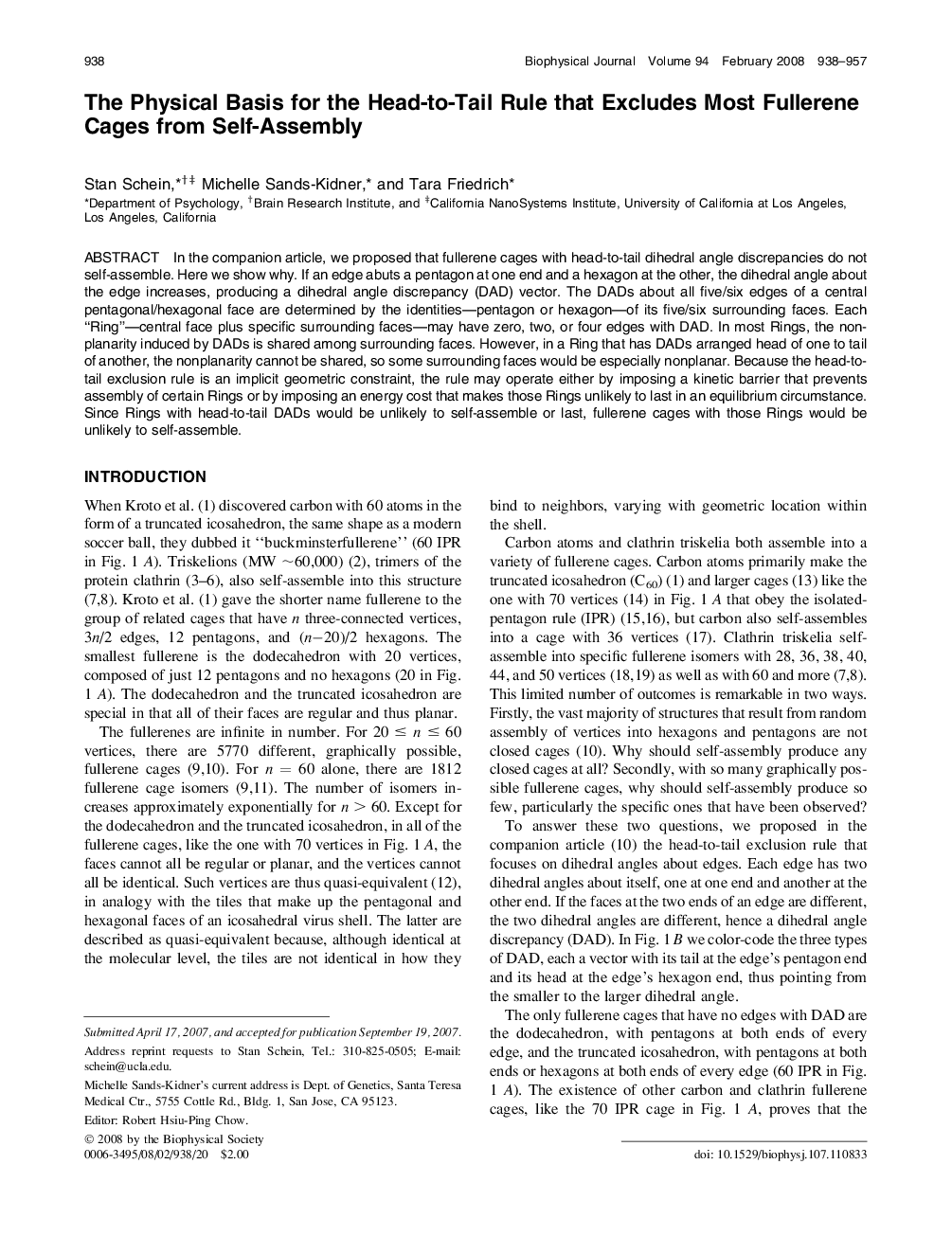| کد مقاله | کد نشریه | سال انتشار | مقاله انگلیسی | نسخه تمام متن |
|---|---|---|---|---|
| 1955251 | 1057817 | 2008 | 20 صفحه PDF | دانلود رایگان |

In the companion article, we proposed that fullerene cages with head-to-tail dihedral angle discrepancies do not self-assemble. Here we show why. If an edge abuts a pentagon at one end and a hexagon at the other, the dihedral angle about the edge increases, producing a dihedral angle discrepancy (DAD) vector. The DADs about all five/six edges of a central pentagonal/hexagonal face are determined by the identities—pentagon or hexagon—of its five/six surrounding faces. Each “Ring”—central face plus specific surrounding faces—may have zero, two, or four edges with DAD. In most Rings, the nonplanarity induced by DADs is shared among surrounding faces. However, in a Ring that has DADs arranged head of one to tail of another, the nonplanarity cannot be shared, so some surrounding faces would be especially nonplanar. Because the head-to-tail exclusion rule is an implicit geometric constraint, the rule may operate either by imposing a kinetic barrier that prevents assembly of certain Rings or by imposing an energy cost that makes those Rings unlikely to last in an equilibrium circumstance. Since Rings with head-to-tail DADs would be unlikely to self-assemble or last, fullerene cages with those Rings would be unlikely to self-assemble.
Journal: - Volume 94, Issue 3, 1 February 2008, Pages 938–957